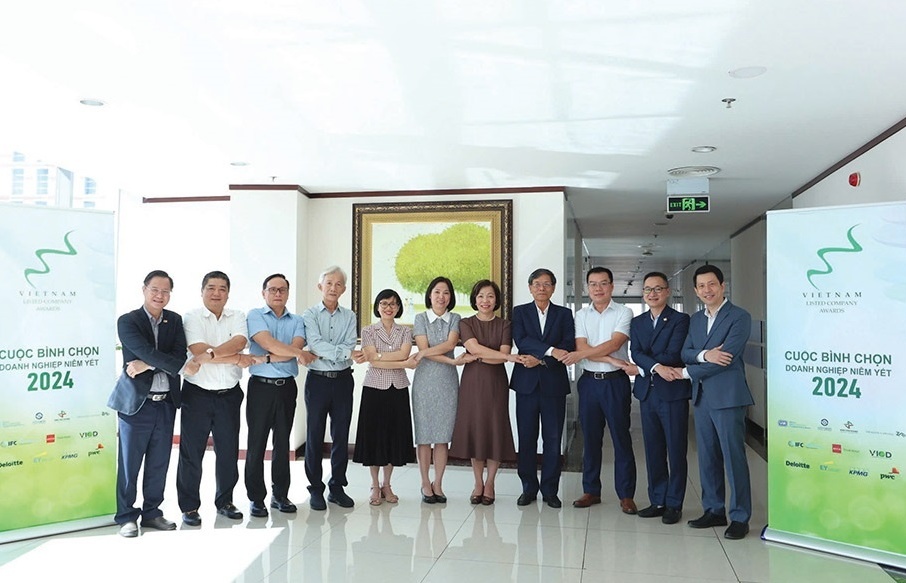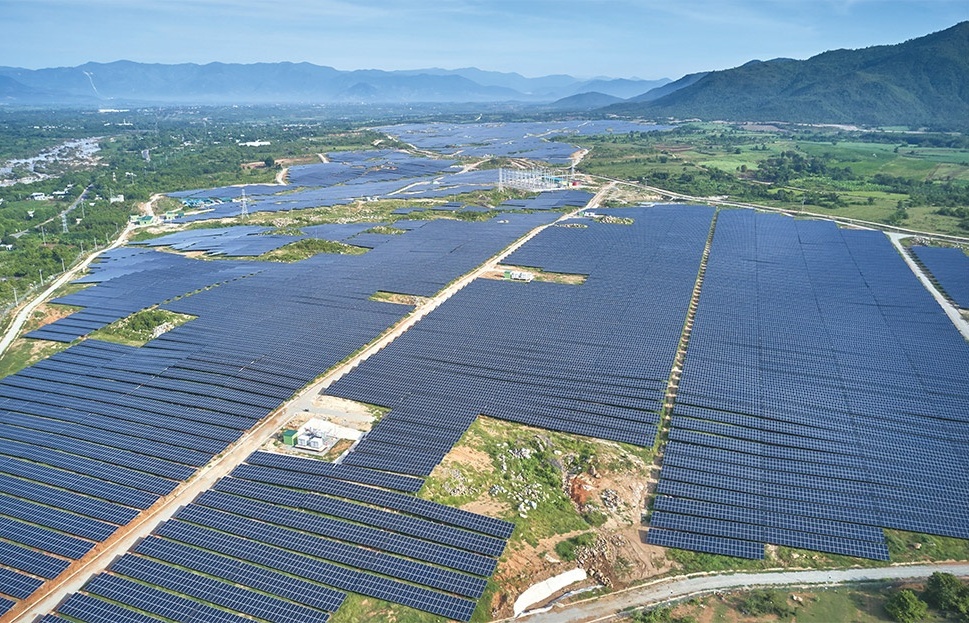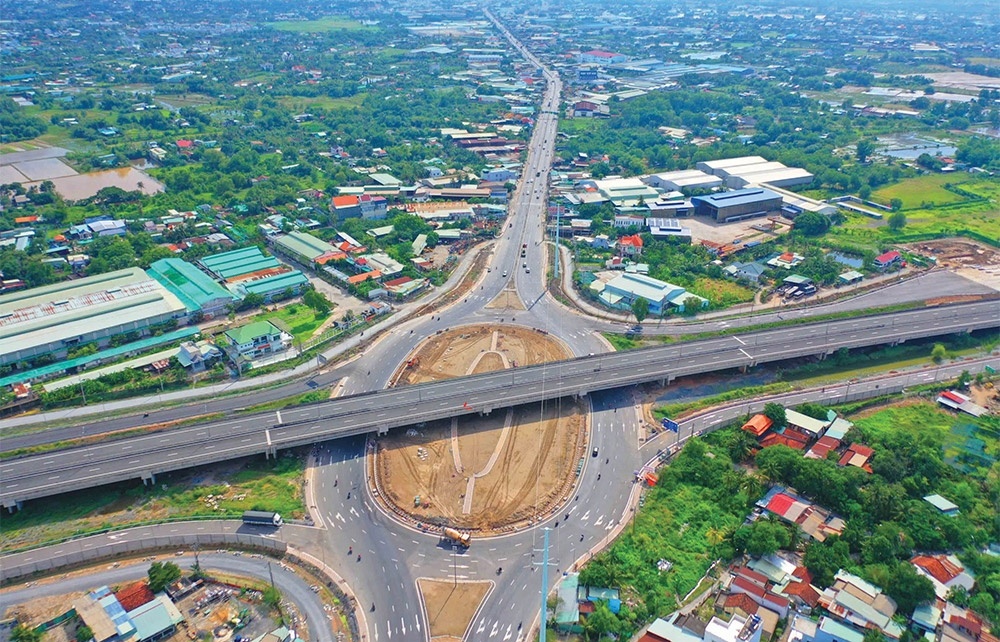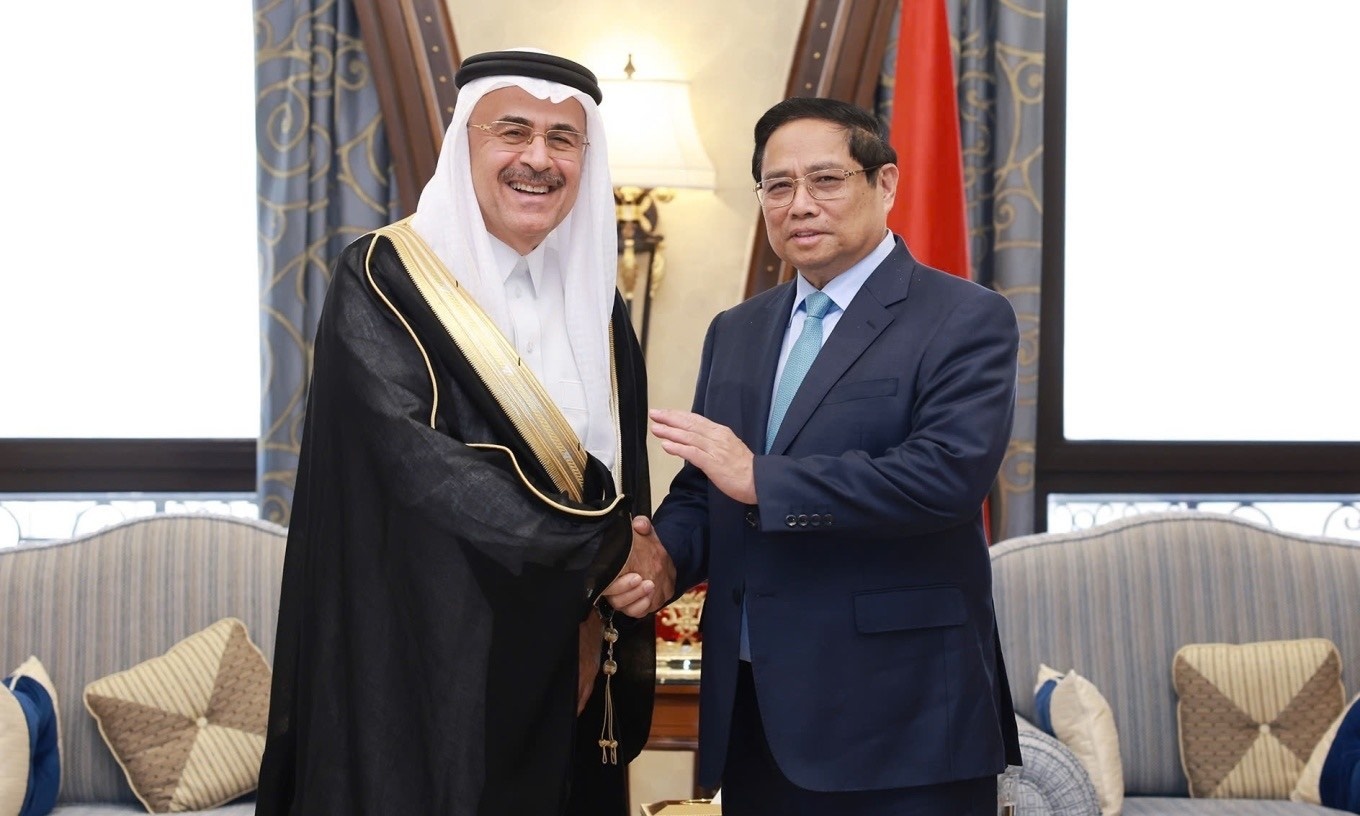PM leads mindset change for infrastructure breakthrough
 |
| A boost in public investment will help Vietnam attract more private capital, including from foreign sources. Photo: Le Toan |
Since taking office on April 5, Prime Minister Pham Minh Chinh has been considering a boost in disbursement of public investment as an effective solution for further economic growth. Neither the economy nor Vietnam’s fundamental innovation in infrastructure in the 2021-2025 period may not be able to go forward if bottlenecks in public investment are not handled.
The opportunity to participate in the southern infrastructure projects of Tracodi JSC – a member company of Bamboo Capital Group – has been expanded as the Ministry of Transport outlined the road development plan for the next 10 years, with about 64 transport projects in the southwest and 38 projects in the southeast. However, the actual implementation of these projects may be slowed down, with the biggest cause being a lack of capital.
Pouring money into infrastructure and improving traffic in the south could create much larger economic spillovers than in other regions but capital from the state budget can only meet about one-third of the demand for infrastructure development.
Lack of capital
Meanwhile, the Mekong Delta region requires a huge amount of capital for infrastructure development. For the next 10 years, the total investment for the southwest region is expected to be about VND162 trillion ($7.04 billion) and VND361 trillion ($15.69 billion) for the southeast, excluding Long Thanh International Airport. For the next five years, the southwest region will require about VND108 trillion ($4.69 billion) while the southeast requires about VND175 trillion ($7.61 billion).
To create resources for national infrastructure development, the government previously launched a policy to solve the lack of capital, but its implementation process has not yet ensured harmony between the state, investors, and the people.
Data from the Ministry of Transport shows that total capital required for Vietnam’s transport infrastructure in the last five years was nearly VND1 quadrillion ($43.47 billion) but only VND210 billion ($9.13 billion) of that could be afforded, of which mobilised capital from the society made up a mere 10-22 per cent, with the rest coming from the state budget and official development assistance.
The new government has delivered important messages. Firstly, the way the government operates has changed, moving from a government based on collective responsibility to one of individual responsibility.
Secondly, institutional breakthroughs shall be achieved by reviewing mechanisms and policies. Thirdly, priorities shall be shifted to create breakthroughs in infrastructure.
The PM has chosen to have many meetings with local agencies, mainly to update, supplement, and evaluate reports on the implementation of medium-term public investment plans for the last five years and proposed medium-term public investment plans for the next five years.
Meanwhile, Vietnam’s economy is witnessing the inefficiency of many state-funded projects. Some provinces remain underdeveloped, with a low regional GDP and a limited budget, but hundreds of projects are expected to be completed in the next five years.
Public investment could remain one of the growth drivers in the coming period, backed by the PM’s determination. To promote effective public investment, PM Chinh asked ministries, agencies, and localities to harmonise the regions but also not rely on the state budget and instead mobilise capital from society and foreign resources.
New direction
The prime minister also stated his views on the construction of expressways in the coming period during a meeting on May 20. According to the PM, wherever the project goes, the locality must take care of the budget and is responsible for site clearance.
Based on each scenario, the state will support part of the funding (up to 50 per cent) for construction and installation, but state capital is merely to be used as a “primer” leading to other capital sources.
To reduce the number of projects and focus capital onto key projects, according to the prime minister, localities, agencies, and ministries must calculate and save recurrent expenditures for development investment, while at the same time readjusting investment projects focusing on national security and social life.
The initial efforts of PM Chinh and the government were recognised by analysts and investors. Dr. Dinh Trong Thinh of the Academy of Finance said that public investment will now be seen in a completely different context than in 2020, with large amounts of money being channeled into COVID-19 prevention and the support of the business community, taking up valuable resources.
Thinh said, “The prime minister must soon take measures to prevent the decline in public investment disbursement in the short term and promote the region’s economy to remain on its expected growth trajectory.”
As the market for building materials has seen price increases of up to 40 per cent over last year, the total investment capital – which is the most important factor in project financing – as some projects has risen accordingly.
Moreover, changes in the total required capital could lead to investors having to apply for an investment approval again, which can take months or even years. This and such issues could lead to wasteful and inefficient delays to many large public investment projects, such as the metros in Hanoi and Ho Chi Minh City.
Currently, as businesses and society show low motivation to spend money due to the pandemic, public investment is playing a more important role than ever.
| Streamlining public investment On May 23, the prime minister issued Directive No.13/CT-TTg on speeding up and improving the quality of medium-term public investment plans for the 2021-2025 period. Prime Minister Pham Minh Chinh highly appreciated the preparation of the Ministry of Planning and Investment (MPI). The total budget under the medium-term public investment plan for the 2021-2025 period is VND2.87 quadrillion ($124.8 billion), an increase of VND120 trillion ($5.22 billion) compared to the previous estimate. This additional amount comes from savings in recurrent expenditures transferred to public investment that does not increase the total budget expenditure. The MPI proposed that the government may ask competent authorities for new mechanisms and policies to effectively implement the fresh public investment plan. The 5-year socioeconomic development plan has been approved by the 13th Party Congress, ensuring the common goals and interests of the nation. For public investment to play a leading role in attracting maximum resources from all economic sectors, the MPI continues coordinating with ministries, agencies, and localities to carefully review and reduce the number of projects that are not necessary and inefficient to a total of about 5,000 projects. As a result of the recent review, relevant government bodies have cut down the number of planned projects from 6,447 to 5,400. |
What the stars mean:
★ Poor ★ ★ Promising ★★★ Good ★★★★ Very good ★★★★★ Exceptional
Related Contents
Latest News
More News
- Mitsubishi Estate launches Logicross Hai Phong - a milestone in logistics evolution (November 20, 2024 | 14:32)
- Semiconductor workforce partnerships deliver industry-relevant training (November 20, 2024 | 10:58)
- German Quickpack to invest $31.7 million in Long An province (November 20, 2024 | 09:31)
- Foreign-invested enterprises drive logistics investment in the southeast region (November 20, 2024 | 09:27)
- Chile visit underscores trade benefits (November 19, 2024 | 10:00)
- Trump’s second term impacts sci-tech activities and industry 4.0 technologies (November 18, 2024 | 10:00)
- Vietnam eyes nuclear revival to bolster energy security (November 14, 2024 | 16:46)
- Kyokuyo completes $13.5 million seafood factory in Vietnam (November 14, 2024 | 12:19)
- VinFast receives $3.5 billion funding from Vingroup and Pham Nhat Vuong (November 14, 2024 | 06:38)
- Localities sprint to reach FDI targets (November 13, 2024 | 10:00)


 Tag:
Tag:


















 Mobile Version
Mobile Version